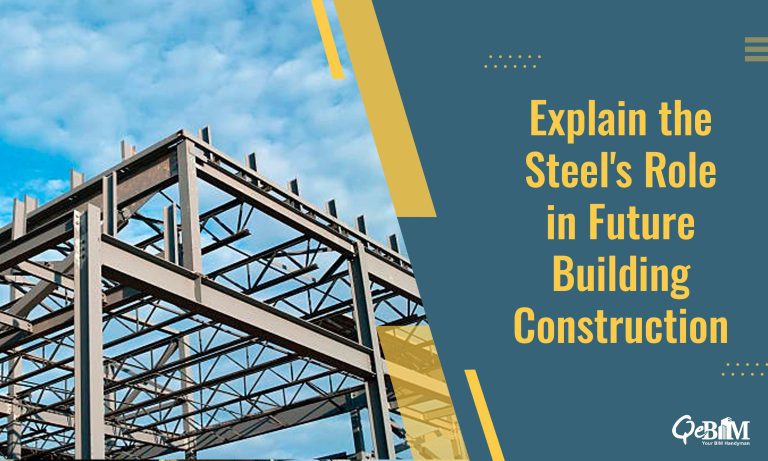Explain the Steel’s Role in Future Building Construction

Steel has consistently been a fundamental material in construction, valued for its robustness, resilience, and adaptability. From towering skyscrapers to expansive warehouses, steel buildings have shaped the modern cityscapes as well as industrial landscapes alike. Steel structures are not just a passing fad; they are essential for several reasons in today’s construction industry. As we look forward, the future of steel structures/buildings appears even more promising driven by technological advancements, sustainability imperatives, and evolving architectural trends.
- Technological Advancements
The advancements in technology are revolutionizing the way steel buildings are designed, fabricated, and assembled. Technologies/Tools like CAD and BIM have enabled architects and engineers to create intricate designs that optimizes the structural integrity and energy efficiency.Moreover, services such as Steel Detailing Services and Structural BIM Services are streamlining the fabrication process, reducing the construction timeline thereby minimizing the material waste. These services not only enhance precision but also offer cost-effective solutions for creating complex steel structures.
- Sustainability and Environmental Impact
In an where sustainability takes centre stage, steel emerges to be as a frontrunner in the environmentally conscious construction. Steel is known to be exceptionally recyclable, with its recycling rate going beyond 90% globally. Utilizing recycled steel helps decrease the need for raw materials and lowers the carbon emissions associated with the steel production.Additionally, advancements in the coatings and treatments enhance steel’s resistance to corrosion and extend its lifespan thereby reducing maintenance requirements and lifecycle costs. As buildings become more energy-efficient, steel’s ability to support insulation and integrate renewable energy systems further enhances its appeal in sustainable construction practices.
- Design Flexibility and Versatility
Steel’s inherent strength-to-weight ratio provides architects with unparalleled design flexibility. This versatility allows for open floor plans, expansive column-free spaces, and innovative façade designs that redefine architectural aesthetics. Steel structures can adapt to various building types, from residential complexes and office buildings to sports arenas and airports, showcasing its adaptability across different sectors.Moreover, the prefabricated steel components enable modular construction techniques, facilitating rapid assembly on-site and minimizing disruption to surrounding environments. This efficiency makes steel an attractive choice for urban infill projects and developments in densely populated areas.
- Resilience and Safety
Steel buildings do offer superior resilience against natural disasters such as earthquakes, hurricanes, and fires. Steel’s ductility allows structures to flex under stress without compromising their integrity, making them inherently safer than the traditional building materials in seismic-prone regions.Furthermore, advancements in fire-resistant coatings and insulation materials enhance the fire safety of steel buildings, ensuring compliance with the stringent building codes and regulations. As climate change continues to influence the building design, steel’s resilience and durability provide a robust solution for constructing resilient communities.
- Economic Viability
From a financial perspective, steel buildings offer significant economic advantages over conventional construction materials. The predictability of steel prices and reduced construction timelines translate into cost savings for developers and investors. Additionally, the longevity and minimal maintenance requirements of steel structures contribute to the long-term economic viability, making them a prudent investment for building owners and stakeholders.
Steel Structures: Shaping the Future of Modern Architecture
As we go through the complexities of urbanization, sustainability, and technological innovation, steel remains a pivotal force in shaping the future of construction. Its unmatched strength, adaptability, and environmental benefits position steel buildings as a cornerstone of modern architectural design and infrastructure development.
Looking forward, the continuous research and development in steel manufacturing and construction techniques promises even greater efficiencies and advancements. As global demand for sustainable and resilient infrastructure grows, steel buildings are poised to lead the way in meeting these challenges, reaffirming their status as a preferred choice for builders, architects, and construction communities worldwide.